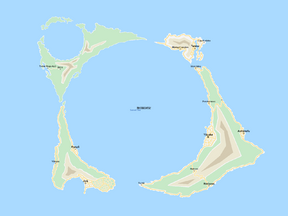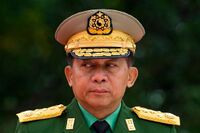User:Orioni/Sandbox 6
Introduction
Radiant Republic of the Sunset Sea Islands | |
|---|---|
| Motto: In Solitudine Pax (Peace in Solitude) | |
| Anthem: Toui Sora He (“To the Far Sky”) | |
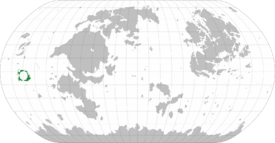 The Sunset Sea Islands on Eurth | |
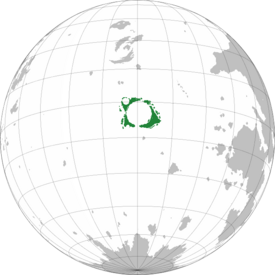 Sunset Sea Islands in Thalassa | |
| Capital | Sunset City |
| Official languages | Sunset Sea Islandian |
| Demonym(s) | Islander (singular) Islanders (plural) |
| Government | Unitary Presidential Republic |
• Prime Minister | Theresa Tumbleweed |
| Legislature | Parliament |
| Establishment | |
• First Oriental settlements | 1200 - 500 BCE |
• Founding of Mat Troi Lan | 16th century |
• Liberation | 9 February 1947 |
• Radiant Dawn | 25 November 2017 |
| Area | |
• | 955,217.11 km2 (368,811.39 sq mi) |
| Population | |
• 2017 census | 164,627,827 |
• Density | 171/km2 (442.9/sq mi) |
| Gini | 13.3 low |
| HDI (2018) | 0.9413 very high |
| Currency | SSI Sol (☉) (SOL) |
| Driving side | right |
| Calling code | +22 |
| ISO 3166 code | SSI |
| Internet TLD | .ssi |
The Sunset Sea Islands, officially the Radiant Republic of the Sunset Sea Islands and often abbreviated as SSI, is a sovereign state in equatorial Thalassa on Eurth. It is an island state on an archipelago of 955,000 square kilometres (369,000 sq mi) which was formed by a meteorite impact approximately 66 million years ago. The archipelago consists of four main islands and countless smaller ones. With 164 million inhabitants, the Sunset Sea Islands are the most populous country in Thalassa and by far its most potent economy. Its capital is Sunset City (native: Yūyake-kyū). With over 24 million inhabitants, it is one of the largest cities in the world. The country is known for its incredible variety of endemic species of flora and fauna.
Genetic traces link native Islanders to the inhabitants of Europa, implying that Oriental seafarers might have been the early ancestors of the population of the Sunset Sea Islands. The geographically isolated civilisation developed an entirely unique culture. Throughout its history, several warlords and tribal chiefs founded villages throughout the country, mostly on the two southern of the major islands. The country was consolidated into the Empire of Mat Troi Lan in the 16th century. In the following centuries, Matroilan pursued a policy of isolation from the rest of the world, as foreign influences were considered harmful to the country and its culture. In the first half of the 20th century, Mat Troi Lan played an aggressive role in the Thalassan War, fighting a war of conquest against most of the continent and adjacent countries. The conquest was mostly successful, as Matroilan joined the war relatively late, when the surrounding smaller countries were already weakened by the previous years of war. However, Matroilan caused Iverica to enter the war when it declared war on Mauridiviah. Matroilan was crushed by the modern and energized Iverican Army. After this crushing defeat, then Emperor Gabrielos was sentenced to exile. His youngest son, Tomasso, was crowned as a constitutional monarch. The country was reformed into the modern, democratic Sunset Sea Islands and quickly developed into one of the technologically most developed and economically powerful countries in the world.
Following a brutal terrorist attack, dubbed the '17 Sorrows, that took the life of Crown Prince Simon, heir to the throne, and led King Tomasso to commit suicide, the Kingdom of the Sunset Sea Islands turned into a centralised republic. Current political developments seem to indicate that the country is slowly evolving into a technocracy.
Etymology

The name “Sunset Sea Islands” is an exonym bestowed upon the nation following the end of the Thalassan War. An individual citizen or groups of them of the Sunset Sea Islands can be referred to as either Sunset Sea Islander, or just Islanders, which is more common. The expression also works as a general adjective in context with Islander origin.
Prior to the aforementioned war, before 1941, the country was known as the “Empire of Mat Troi Lan.” This name roughly translates to “Empire of the Setting Sun.” When referring to the historical empire, the contracted form “Matroilan” is also applicable for individuals and concepts alike. Internally, citizens still use endonyms when they refer to their country. Overseas, however, the usage of the endonym and its derivative demonyms is somewhat frowned upon, as they are often associated with the oppressive imperial regime.
The origin of the endonym (from which the exonym was derived) is theorised to lie within the Great Turmoil period (late 15th century - early 17th century). According to potentially prosaic recounts, prior to the decisive battle that would unite the entire archipelago under one banner, a motivational speech given by the later victorious warlord to his forces was illuminated by an extraordinarily beautiful sunset. This sight was interpreted a blessing by the goddess of the sun, which served as an in hoc signo vinces (Aroman, “in this sign thou shalt conquer”). To commemorate this occasion, the empire was named Mặt Trời Lặn.
Geography
The Sunset Sea Islands are located on a remote meteoric archipelago, formed by an apocalyptic impact roughly 66 million years ago. The event, which is said to have eradicated 75% of global flora and fauna at the time and ended the age of dinosaurs, created a huge, circular crater, today known as the Fallen Star Sea. The edges of this crater are above sea level, forming the Sunset Sea archipelago. The nucleus is believed to have split into one large part and two smaller parts. The secondary impacts created the smaller craters on the shores of Liberty Island (Jiyū-shima) in the South and Bastion Island (Toride-shima) in the Northwest.
The geographic location in the middle of the Oriental Ocean isolated the islands from the rest of the global biosphere, leading to a huge variety of endemic species. Whilst some plants and animals have gone extinct over the years, millions of globally unique species thrive within the lush jungles and shallow lagoons of the Sunset Sea Islands.
The vegetation varies strongly between the three largest major islands and the smallest of the four, Solitude Island (Kodoku-shima). Whilst the former are covered with dense rainforests, Solitude Island is a barren, rocky wasteland. Whilst the rocks are mineral-rich, for a yet unknown reason fertile soil failed to form on Solitude Island. Currently, it is used for industrial reasons and to alleviate overpopulation in the cities of the nation, as heavy environmental protection laws prevent further urban expansions on the three largest islands.
Over 75% of the total area of the Sunset Sea Islands is classified as nature reserves, one of the highest such values in the world. Bastion Island, the second-largest island of the archipelago, is under complete environmental protection, as it features the largest variety of species that can only be found in the Sunset Sea Islands. Its integrity, that of the whole nation's ecosystem, is watched over from the Bastion Institute of Climate Surveillance (BICS), deep within the heart of the island. The lack of arable land forces the nation to import agricultural products from abroad to feed its growing population.
Cities
| City | Native name | Population | Location | Description |
|---|---|---|---|---|
| Sunset City | Yūyake-kyū | 24,747,760 | Central Sunset Island | Capital and most populous city of the nation. Administrative and economic centre. Known for its breathtaking skyline, most notably the highest building of the nation and the entire continent, the seat of the national government, the Yūyake 101. |
| Asimov Science City | Ashimofu Kagakutoshi | 12,723,986 | Eastern Sunset Island | Intellectual heart of the nation, featuring the most prestigious university of the Sunset Sea Islands, home to many scientific institutions and high-tech corporations. Sometimes called “Silicon Coast”. |
| Porto Libertad | Jiyū-kaikō | 9,025,579 | Southern Liberty Island | Established by Iverican soldiers at the end of the Thalassan War, the harbour town quickly became the Islander gate to the world. Most goods either exported from or imported to the nation pass through Porto Libertad at least once. A small lighthouse off its shore is the city's major landmark. |
| Esperanza (SSI City) | Kyoyō-kyū | 6,004,044 | Eastern Liberty Island | Influenced by foreign trends after the Thalassan War, the city became a hotspot for naturalist movements, including a strong nudist community. The liberal and uninhibited lifestyle became a major immigration magnet during the times of global peace movements in the latter half of the 20th century. Even today, nudity is a common sight throughout Liberty Island, especially in Kyoyō-kyū, which became known as Esperanza overseas. |
| Utopia Resort City | Yūtopia rizōto-shiti | 4,569,509 | Western Liberty Island | Founded close to Esperanza, Utopia Resort City was meant to be a tourist magnet from the start. The government ordered its construction shortly after the end of the Thalassan War, to bootstrap the Islander economy and to reconcile the world with the Islanders and vice versa. The city stretches along the western coastline of Liberty Island. Its proximity to the nudist community of Esperanza became a major tourist magnet, further spreading nudity to URC and throughout the island. |
| Tenma | Tenma-kyū | 3,199,399 | Solitude Island | Construction of Tenma started in 2018 to alleviate the problems of urban overpopulation and lack of building space in the rest of the nation. It is the first permanent city on the desolate Solitude Island. Its remote location makes it perfect for the more polluting industries of the nation and provides enough building space for almost unrestricted expansion. Furthermore, the city will have a strong scientific focus. Following a referendum in July 2018, it was decided to install an autonomous technocratic authority in Tenma as a trial run for the whole nation. The city will accommodate workers from the local mining complex, offshore wind warm and the Space Exploration Centre in the north of the island. A Synturian industrial park is under construction in Tenma. |
| Porto Rosso | Porotorosso | 1,278,428 | Northern Sunset Island | For a long time controlled by a local mafia clan, declared independence for a short while. The conflict was resolved, when the Don's son was allowed to marry Princess Selena, daughter of late King Tomasso. Still mostly autonomous, the new national government, however, slowly begins cracking down on the special rights. For an unknown reason, the city attracts large numbers of tourists from Fulgistan every year. |
| Bastion Reservation City | Toride Hogo-kyū | 537,555 | Bastion Island | Small city supplying necessary tools and equipment to the scientists at the Bastion Institute of Climate Surveillance. Most inhabitants work in transportation, medical services or protect the island's shores from maritime pollution. |
History
The history of the Sunset Sea Islands can be largely divided into six categories, two regarding the time before the 20th century, two about the 20th century and two about the time between the liberation of the nation and the present.
Prehistoric Era
Older version — In the latter half of the 20th century, archaeologists discovered ruins of a prehistoric city deep within the jungle of Bastion Island, close to the Northwestern crater. The fallen civilisation native to the island seemed to have reached a relatively high level of technological development before it went extinct, in comparison with other contemporary civilisations. One of the most impressive feats of the civilisation were cobblestone roads and rock temples. Furthermore, researchers found out that the civilisation used a system of base-12, Braille-alphabet-like runes for recording history. This made a total of 4.096 possible combinations possible, enough for a rudimentary alphabet. Wall paintings seem to depict the deities the civilisation worshipped, gods descending from the skies on spheres of fire. Some speculate that members of the civilisation were aware of the concept of meteorites and their ability to form craters. Conspiracy theorists like to speculate about the native Islander civilisation meeting ancient aliens, as the creatures are depicted as humanoids with elongated skulls and sturdy front legs. What caused the civilisation to disappear is currently unknown.
Newer version — Traces of prehistoric settlements on the Islander archipelago are fairly limited as a result of its isolated position in the middle of the Thalassan Ocean. Nevertheless, remnants of at least one fallen civilisation were found along a gulf on the northwest of the four main islands. The artefacts, which have been dated as far back as 15,000 BCE, exhibit a level of complexity and sophistication rarely encountered elsewhere in the world during this period. Meteorites seemed to represent an integral part of this civilisation's culture and beliefs, as imagery found on abandoned ritual sites often depict artistic renditions of falling stars and meteorite showers. Members of this civilisation seemed to be aware of the meteoric origin of the archipelago, which would later come to be known as the Sunset Sea Islands. It is theorised that during this period the Eurth passed through an almost depleted field of cosmic dust, which led to yearly meteor showers. Upon observation of minor impacts, conclusions could have been drawn regarding the origin of the entire archipelago, which might have served as a cultural and religious origin story. What caused this civilisation to go extinct is still unknown.
Classical Era
The Matroilan dynasty was at the peak of its influence and power during this Classical period. Their territories stretched from the islands of the Sunset Sea in the west to as far east as Mesothalassa. (WIP. Have a look at Chola dynasty#Imperial Cholas.)
Older version — It has been scientifically proven that what is today regarded as a “native” Islander is genetically related to ethnic Orinese. Most historians speculate that the first Orinese arrived at the archipelago between 1200 and 500 BCE. Although artefacts to link the settlers to their origin have been found, no political links could have been proven. The most common theory suggests that the sheer distance between Orioni and the archipelago made remote governance or even a sense of unity impossible through the lack of communication. The individual settlements slowly deteriorated into tribes and small villages. The secluded communities seldom interacted and when they did, they met on the battlefield. This isolation caused individual cultural traits to develop, for example, a unique art style. It is commonly accepted that the birth of endemic culture marked the point at which settlers from Orioni became native Islanders. Cultivated rice became the primary source of nutrition for the native Islanders. During the 16th century, the tribes were unified through conquest by a gifted warlord. His conquest resulted in the foundation of Matroilan or Mat Troi Lan (“Empire of the Setting Sun”), named after an In hoc signo vinces (“In this sign thou shalt conquer”). The light of a magnificent sunset is said to have illuminated the speech the warlord gave to motivate his soldiers to extend their hegemony throughout the whole archipelago. In the following decades, the banner of Matroilan flew on one island after another. The conqueror proclaimed himself Emperor by the Grace of the Gods and became the founder of the Matroilan Imperial Dynasty, which would go on to rule Matroilan with an iron fist for generations.
Newer version — Roughly ten thousand years later, hunter-gatherer tribes, probably originally eastern Europan in origin, arrived at the southeastern main island. These tribes were characterised by their semi-sedentary nature, pit dwellings and rudimentary agriculture. Remains of pottery and other clay vessels have been recovered from these tribes, which are now referenced as “native.” Western Aurelian islanders would intermingle with native inhabitants in the last few centuries before the Christian calendar, introducing wet rice farming, as well as more sophisticated pottery and metallurgy. Islander language, both spoken and written, were strongly influenced by these migrant ethnicities. At this point, awareness of all the major islands was present in early civilisations, only the southern ones, however, were densely inhabited or pursued for expansion. The northeastern one was very hostile towards human colonisation, as the rough terrain, sparse vegetation, hostile wildlife and brutal equatorial solar radiation made prolonged presence unviable at best, dangerous at worst. The northwestern island, however, was largely uninhabited for vastly different reasons. The lush, densely vegetated island was unrivalled in natural beauty and was believed to be the home of the gods in early Islander cultures and religions. The permanent population was minuscule in comparison to the rest of the inhabited islands, and mostly composed of monks and acolytes. The only artificial structures on the island were sanctums and temple complexes, designed for communication with the gods inhabiting the island. The largest of these sites had to be visited by every new emperor to notify the gods of their commencing reign and the goals they pursued. Presumably, weather patterns or other natural phenomena were interpreted as omens regarding the new emperor's mandate. The sanctity and isolation of the island led to many ancient temple structures being spared from military conflicts raging elsewhere in the region. Some temples can prove millennia of continuous use. Nowadays, aside from the few monks maintaining the temple complexes, the only other inhabitants of the island are scientists studying the island's unmatched biodiversity. No urban settlements have ever been constructed there, despite the island's considerable size. The institution of the first imperial structures were results of conflicts throughout the western Aurelian islands. The imperial court led to far-reaching reforms covering most aspects of classical society, from land use to taxation, uniform writing systems and social norms. The first central and subordinate local governmental structures were created during this era. Most aspects of cultural identity today identified as distinctly Islander begun during the end of the Classical Period, which ended with the destabilisation of imperial structures during the 12th century CE.
Early modern era
Great Turmoil (15th-17th centuries)
During this period, Islander society was defined by a stratified, but not impermeable caste system. Whilst the vast majority of the population were farmers, rising through the castes was possible, most commonly through enlisting in the armies of the warlords which carved up the territory of the archipelago.
Whilst the archipelago de nomine was united under one emperor, several local authorities had evolved into armed clans and largely decentralised the authority away from the imperial throne. These quasi-states were powerful enough to raise taxes, draft soldiers and enact laws in their spheres of influence. The warrior culture present in this time, as well as its code of conduct, intrigues, ornate armours, stealthy assassins and aesthetic influence modern pop culture throughout the world significantly. In this era of general mistrust and frequent military conflict, the clan controlling the imperial capital (and thereby the emperor) de facto ruled the country. These, roughly equally strong factions, would often rise and fall in prevalence, as every battle won or lost could dramatically shift the balance of power. In the end, it was an alliance of two such states that led to the eventual unification of the country under the Empire of Matroilan. The consequent legal reforms laid the foundations for the modernisation of the country in the following centuries.
Other castes included artisans, which were commonly taught in temple schools by monks specialising in the respective fields. Products by traditional black- or goldsmith temple schools are in high demand as luxury goods both in the Sunset Sea Islands and overseas.
Contact with Europan and other foreign cultures was established during this era, leading to significant cultural and technological progress, such as firearms, whose introduction had a great influence on the Great Turmoil. However, to avoid colonisation or foreign conflicts swapping over to the empire like at the end of the Classical Period, a largely isolationist foreign policy was introduced. Limited contact was maintained with Orinese tradespeople, which laid the foundations for “Western Studies”, which led to the proliferation of paved roads, modern water transportation and banking at the end of the Great Turmoil.
Mat Troi Lan (17th-20th centuries)
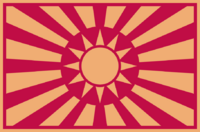
When Matroilan was contacted by Europan traders landing on the shores of the archipelago, the Emperor $Name ordered attacks on every foreign ship approaching Matroilan shores from this point onwards. Foreign influences were thought to be a threat to the Empire of Matroilan and its culture. For the next several centuries, Matroilan went into isolation, focussing on internal developments, increasing its material wealth and creating art and culture.
The population of Matroilan continued to grow rapidly because of the wealth of the islands. However, arable land was sparse and famines began ravaging the nation. The current Emperor declared this catastrophic situation to be the fault of foreign powers that forced Matroilan to remain within its borders. The people believed that entities overseas deliberately prevented Matroilan from expanding into new lands with untapped resources to starve it from within. Over the years, a strong sense of nationalism, racial superiority, militarism, and xenophobia developed throughout Matroilan.
20th and 21st centuries
Thalassan War (1941-1947)
In the 1940s, war spread throughout the continent of Thalassa. The war originated from a conflict between Andalla and Giokto and would soon pull the whole continent into battle. In the meantime, Mat Troi Lan had subjugated the lesser developed island nation of Shurui (~Futanarien) and claimed the Dobbarier Reef (~Dobby Is Free), going on to mercilessly exploit the nation for material gain. Their lands were pillaged to feed the population of Mat Troi Lan and their resources were taken to fuel the Imperial war machine, which increased its production of war ships and weapons dramatically.
When the original war faring parties in Thalassa were exhausted by years of armed combat, Matroilan took its chance to strike. By attacking the destroyed and weakened nations, Matroilan of Mat Troi Lan managed to spread its rule throughout the entire continent of Thalassa. To establish a “Greater Thalassan Co-Prosperity Sphere”, Matroilan went after nations neighbouring the continent. “Co-Prosperity” was, naturally, not the goal of the campaign, but total economic exploitation of the continent for the benefit of Matroilan.
Made blind by the successful war, the current Emperor, Gabrielos, declared war on Mauridiviah, knowing that that would make Iverica join the war. Although the latter was both more technologically advanced and not exhausted from any wars, Gabrielos firmly believed that his nation was invincible. Within months, Matroilan was defeated by a series of crushing military failures. It was forced to surrender on February 9th, 1947. The victorious parties sentenced Gabrielos to a life in exile. He died five years later in a small lookout on an island off the eastern coast of Sunset Island.
His youngest son, King Tomasso, was inserted on the throne and the nation, as his older brother, Prince Zenos, had died during the war. The nation was reformed as an independent, constitutional monarchy, the Kingdom of the Sunset Sea Islands was born. Several government officials were replaced with international governors to ensure the SSI would turn into a modern society.
Kingdom (1947-2017)

During the age of the Kingdom (1947-2017), the nation prospered. A series of policies were introduced to bring the nation up to speed on an international level. International economic treaties and deals were made to bring foreign investment money and expertise into the Sunset Sea Islands. Under King Tomasso's wise reign, the gross domestic product rose at rates never seen before in the world.
Furthermore, incentives were created to propagate immigration into the Sunset Sea Islands. King Tomasso knew that the xenophobic ideology of the population had to be destroyed at its core to make the nation fit in on an international scale. Also, the complete population was forced to undergo rigorous re-education, teaching the value of diplomacy and peaceful coexistence. Especially in schools, children were taught what hardship imperialism and militarism had brought over the nation in the past. Decades of such internationalist and pacifistic policies resulted in a thoroughly pacifistic and xenophile population. Furthermore, the Sunset Sea Islands solidified their position as a world leader in foreign law, diplomacy, and trade. The nation had found dozens of allies overseas and maintained healthy diplomatic relations with most of the world.
The United Border Principality of the Sunset Sea Islands and Futanarien (UBPSSIF) was founded for the SSI to repay the damages it had done to surrounding island states during the Thalassan War. Whilst initially successful, the organisation is mostly defunct today, as no stable governments could be formed in Shurui (~Futanarien) and the Dobbarier Reef (~Dobby Is Free). Now, the SSI only provides coast guard to the nations and maintains emigration centres to make emigration to the SSI simple.
At the beginning of the 21st century, the nation was amongst the global top 20 economies. Furthermore, it became the fastest growing economy in the world, with growth rates regularly exceeding 10%.
Radiant Dawn (2017-2021)
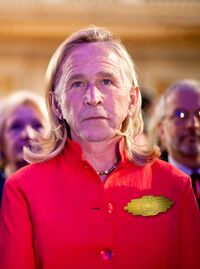
The so-called '17 Sorrows are commonly regarded to be the most recent turning point in Islander history. A bomb attack on the office tower of the Ministry of the Interior, aimed at Crown Prince Simon, took the beloved heir's life. The meeting he attended was tasked with preparing the celebrations of the King's 84th birthday, suggesting that the strike was specifically directed at members of the royal family. So far, there are no serious claims to the crime and connections to anti-royalist fringe groups could not be created. Prime Minister Dr. Lydia Mauve declared a nation-wide state of emergency.
The death of Crown Prince Simon, the 27-year-old heir, was announced the following day. His mortal remains were completely vaporised by the C4 explosion. Up until this point 1,300 deaths, several hundred injuries and three hundred missing person reports were filed. Authorities claimed that with the utmost certainty more survivors were buried underneath the rubble. The following day, the building could no longer withstand the critical damage it had suffered and collapsed, reducing the chance of rescuing trapped survivors to zero.
Protests against the head of government, Prime Minister Dr. Lydia Mauve, surged throughout the nation. Based on her indirect failure to protect members of the royal family, she was forced to resign from office. Furthermore, demands for a stronger police force and a larger budget for law and order swept through the streets of the nation's cities. The current whereabouts of the former Prime Minister are unknown.
Former Minister of the Interior Theresa Tumbleweed announced the foundation of a new political party, the Party of Radiance. Politicians from all over the political spectrum rallied under her banner that promised to stabilise the nation after this shattering event. A political agenda was hastily assembled and distributed. Political observers and experts predicted high levels of approval of the new party.
The celebrations for King Tomasso's birthday were postponed indefinitely, however, on November 3rd, 2017, the monarch took his own life by medical overdose. The suicide occurred exactly on the monarch's birthday, one week after the attack took his son's life. Princess Selena and her husband Prince Adrian of Porto Rosso resigned from their right to the throne and sought refuge in the friendly Empire of Orioni.[1]
Stripped of a next monarch, the Sunset Sea Islands was reformed as a centralised presidential republic after the Party of Radiance's victory in the following elections. The established parties registered record losses, whilst the Party of Radiance and her victorious leader, Prime Minister Theresa Tumbleweed, gained an absolute majority and thereby the power to shape the nation single-handedly. This power was necessary to create a coherent post-royal constitution. Furthermore, the new government adopted the stances of the '17 Sorrows protests, massively investing in law enforcement. Especially the Synapse System, a highly sophisticated surveillance system able to calculate crime probabilities based on the collection of personal data and the analysis of movement patterns.
The official title of King Tomasso was changed postmortem from “the First” to “the Last.” The nation was renamed to the Radiant Republic of the Sunset Sea Islands on November 25th, 2017. The number of casualties of the '17 Sorrows was determined to be 1763.
2021 coup d'état
On the evening of 19 April 2021, the unknown Colonel Ishijima launched a successful coup d'état. [2] All member of the High Council, including First Speaker Gao He Ping, were apprehended and placed under house arrest. As leader of this new junta, Colonel Ishijima then gave himself the sole responsibility of forming a transitional government “to restore law and order to the Sunset Sea Islands.” A series of very harsh measured were introduced, including curfews and lockdowns. Television and radio were also censored, with internet access being restricted to domestic sites only. All Islanders living abroad were also “recalled with immediate effect.”
This sudden change in policy had international consequences. Stock markets across the Eurth took a serious hit.[3] All foreign diplomats were expelled from the country, with only two days notice. Diplomatic services issued a negative foreign travel advice for the Sunset Sea Islands.[4] The military warned that “unauthorised intrusions into territorial waters and or airspace will be met with immediate and lethal force.” Gallambria announced sanctions against the interim government and the withdrawal of all Gallambrian diplomatic missions.[5]
Politics
Government
The Radiant Republic of the Sunset Sea Islands is a unitary, presidential democracy. The Prime Minister, currently Theresa Tumbleweed, acts as both the head of government and the head of state. Political power is separated into Legislative (Parliament), Executive (Prime Minister) and Judiciary (Supreme Court). Although all laws have to be approved by the majority of the parliament, the currently governing party (Party of Radiance) is able to rule alone because of its majority in parliament and the appointment of their party's leader as Prime Minister. The Parliament of the Sunset Sea Islands is one of the largest in the world.
Following the recent end of constitutional monarchism, the young republic is in a process of political reorientation. As a result of tightening relations and increased cooperation with the Syndicate State of Synturia, the ideology of technocracy has experienced a surge in popularity throughout the population. Peaceful, pro-technocratic demonstrations and the independent public debate of the Technocratic Internationale have brought the political system into the limelight. Prime Minister Theresa Tumbleweed has met with technocrats on several occasions. In June 2018, a referendum passed to put the city of Tenma, which is currently under construction, under a provisional technocratic authority. The autonomous city will serve as a test run for the political system. Should the government of the Radiant Republic of the Sunset Sea Islands decide that the test was successful, a second referendum will let the people decide whether to transform the nation into a technocratic republic.
The government mostly prioritises education, healthcare and welfare, law enforcement and environmental protection. Spending in law and order has significantly increased since the '17 Sorrows.
Political parties
| Symbol | Results | Change | Description |
|---|---|---|---|

|
59.7% | +59.7% | The Party of Radiance was founded by former Minister of the Interior Theresa Tumbleweed during the Radiant Dawn after the '17 Sorrows. Her promise to stabilise the nation and invest heavily in law enforcement and security rallied people from all over the political spectrum under her banner and made her Prime Minister in a landslide victory. |

|
11% | -8% | The Bastion Party is an environmentalist and pacifist party. They have played a major role in the past, since they were the pioneers of environmental protection in the Sunset Sea Islands. They also influenced the disarmament of the nation severely. However, the party lost a lot of influence in the last decades. |

|
9% | -23% | The Party for a Social Society has been the largest party of the Sunset Sea Islands for decades. The social democrats lost tremendous amounts of support after the '17 Sorrows. Lost many members to the Party of Radiance. |

|
8% | -13% | The Centrists governed the nation in coalition with the PSS for many years. Often considered to be the conservative sister of the PSS. Lost many members to the Party of Radiance. |

|
6.5% | -10.5% | The Party for Direct Progressive Democracy is a leftist party that advocates direct democracy and referendums by allowing members of the party to vote on the political views of the party through a smartphone application. Lost many members to the Party of Radiance. |

|
5.8% | -5.2% | The Lighthouse Party is a right wing conservative party. Once growing at an alarming rate in the conservative milieu of Porto Libertad and opposed to mass immigration, now barely passes the five percent barrier since the Radiant Dawn. |
Monarchy
WIP
SSI was a monarchy until 2017. The royal house included the following people.[6]
- Emperor Gabrielos (-1952)
- Prince Zenos (died sometime during Thalassan War of 1941-47).
- King Tomasso the Last ($year-2017).
- Crown Prince Simon (1990-2017) --> Simon Station in Antargis.
- Princess Selena (born $year-) and her husband, Prince Adrian of Porto Rosso (born $year-) --> Exiled in Orioni.
Law and order
Law enforcement and public security are the major topics concerning the government of the Radiant Republic of the Sunset Sea Islands. Following the '17 Sorrows, the department of law and order received massively increased funding.
The prestige project of the department is the Synapse System, a nation-wide surveillance mechanism analysing movement patterns, suspicious financial transactions, communications, and internet traffic. Since the implementation of the system, crime rates have dropped significantly, as the algorithms autonomously recognise crimes and report them to the authorities. Furthermore, the Synapse System is able to provide “crime forecasts”, calculating where and when crimes are most likely at any given time. These forecasts have greatly increased the effectivity of police patrols, as routes could be optimised thanks to the data provided by the system. The Synapse System's primary source of information for these predictions is the amount of CCTV cameras throughout the nation. With an average of one surveillance camera for ten people, the Radiant Republic of the Sunset Sea Islands is the nation with the densest CCTV coverage and the largest absolute number of CCTV cameras in the world.
The government furthermore runs an official identification service, ValID. Every citizen ID is linked to a ValID account, which can be used for identification for online services. In combination with an officially licensed computer operating system, PanOS (short for Panopticon Operating System), the government aims to eliminate cyber crimes from the nation.
A curious application of the Synapse System is the possibility of using it as a matchmaking service. During the first months of its existence, the service was introduced as a PR gag, however, the system proved to be performing better than originally expected. By having access to the ID database of the entire population, the system searches for potential matches based on gender preference, life choices, hobbies, interests and several other variables. Launched on September 3rd, 2017, the Synapse matchmaking service is still the most popular in the nation.
The Department of Public Security, which is supervising the system, cooperates with the nation's biggest company, the Elegy Megacorporation, to produce and install the necessary surveillance and analysis technology, including cameras, mega computers and server farms. Currently, the research and development unit is testing autonomous surveillance and law enforcement drones, for example autonomous reconnaissance UAVs or drones patrolling the streets. Only prototypes have been constructed so far.
Military

The incredibly pacifist mindset of the citizens of the Sunset Sea Islands dictates taking distance from any kind of conflict that might escalate into a war. This is why the nation often prefers neutral positions in incidents on an international scale. Throughout the population, working for the military is seen as disgraceful and as treason against the valued principles of peace, diplomacy and international cooperation. For the first time since the Thalassan War, the government of the Sunset Sea Islands was forced to introduce voluntary armed forces after an incident in which a warship from Dolchland appeared within SSI territorial waters. To protect against potential threats, the nation has been slowly expanding its naval presence, thanks to lucrative deals with the Republic of Asgeirria. The Naval Self-Defence Force has also taken over control of the UBPSSIF coast guard, thereby protecting the waters of most of Thalassa. A squadron of Lysian aircraft is stationed in an old air force base as a sign of bilateral friendship.
Although the nation is part of ATARA, the Argic-Thalassan-Alharun Regional Association, it does not participate in TRIDENT, the Tricontinental Defence Treaty. Participation was impossible because of the weakness of the SSISDF and because the decision would not have been supported by the general population.
(WIP. SSI joined EOS in stead. What does 'SSISDF' mean?)
Foreign relations

Throughout the years, the Sunset Sea Islands rose to be one of the most diplomatically active countries in the world to ensure peace and prosperity.[7] The general policy is to always favour peaceful, diplomatic solutions and to abstain from any form of international military operations. The population is open and welcoming towards all foreign cultures, although violent and warmongering tendencies are viewed with dismay. The Sunset Sea Islands are a founding member of ATARA, the Argic-Thalassan-Alharun Regional Association. The country also belongs to the Entente of Oriental States and Group of Island Nations.
As yet, the Sunset Sea Islands are the only country in the world to have concentrated all foreign embassies into a single building, the One World Center in Sunset City. The building consists of several small detached blocks arranged in a ring and covered by one common roof. Thereby, the country tries to present itself as a neutral meeting ground for countries to meet, discuss and search for diplomatic solutions for their disputes. Furthermore, the common building streamlines diplomatic processes in the country.
Economy

Although it is heavily dominated by the tourism industry, the economy of the Sunset Sea Islands is highly diversified. After the end of the Imperial rule, foreign companies used the opportunity to invest in clothing manufacturing and other forms of manual labour. These initial investments helped to kickstart the economy. Over the course of the following decades, more businesses in the branches of technology and IT formed. A notable example is Mantamho, originally a shower curtain producer, which today is one of the most dominant corporations in the field of entertainment electronics and gaming consoles.
The largest single company in the Sunset Sea Islands is Elegy Megacorporation. In January 2018, the company acquired two major competitors, Asimov R&D and Future Technologies, in the largest company merger to date. After successfully fighting off anti-monopoly investigations, Elegy Megacorporation now is a global leader in the fields of bioengineering, organic prosthetics, genetical modification of crops, information technology, mechanical engineering and robotics. Furthermore, the company is the sole supplier of components and equipment to the Department for Public Security and the Synapse System.
Nevertheless, tourism remains the largest source of income and economic strength within the Sunset Sea Islands. Its pristine beaches, crystal clear waters and lush rainforests attract millions of tourists every year. Especially the urban areas of Sunset Island, including the capital, Sunset City, in the East of the nation and the extensive resort areas in the West are major tourist attractions. The national tourism agency runs advertisements addressing “the two beautiful faces of the Sunset Sea Islands”, showcasing both the vibrant nightlife in the nation's never-sleeping cities and the quiet life close to nature in the countryside.
Lastly, the Sunset Sea Islands are the seat of the World Flag Weaving Mill, a producer of premium flags. Not only are most official national flags printed or woven within the SSI, the organisation has also helped to design and redesign many national flags of foreign states. Examples include but are not limited to Cashar, Little Flau, and the flag of ATARA.
Energy
Solitude Island, the most northeastern of the four main islands of the nation, is the main provider of energy to the Sunset Sea Islands. Multiple nuclear power plants and an offshore wind park in the Southwest of the island generate the energy fuelling the whole nation. Electrical energy is transported via undersea cables. Furthermore, solar panels are common on rooftops throughout the nation. Solar farms are also under construction in the wastes of Solitude Island. Because of the equatorial position of the nation, it receives a lot of solar energy, which increases the productivity of solar panels.
The combination of nuclear and renewable energy was chosen to protect the environment of the islands as much as possible. Furthermore, many eco-friendly policies support waste separation, recycling and other environmentally friendly aspects of life. Showers with built-in timers limit waste of water, and central heating is uncommon because of the nation's equatorial position.
Infrastructure
Since the end of the war, heavy investments were made in the urban and regional means of public transportation. Subway, tram, and commuter railway lines connect the urban areas internally, whilst highways and railroads serve as intercity connections. Furthermore, ferry lines are an environmentally friendly connection between the islands of the archipelago. The nation has several international airports, the busiest one being Yūyake International Airport in Sunset City, followed by Asimov International Airport and Esperanza International Airport. High temperatures often cause damage on highways and railways, since the heat causes the materials to expand. Therefore, travel by sea is usually preferred by the population.
Manamana canal
Manamana League members
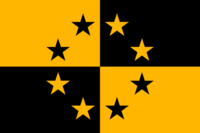
The Sunset Sea Islands benefit heavily from their position as a “bridge between continents.” The nation is a suitable midway point between Europa in the West and Argis, Alharu and Aurelia in the East. Many Andallan transport ships traffic Islander ports and the Syndicate State of Synturia and the Sunset Sea Islands began the construction of the Manamana Canal, a waterway connecting the Oriental Ocean and the Adisi Ocean. This project, however, expanded into an international and multicultural project, as more and more nations joined the construction effort. This led to the foundation of the Manamana League, an assembly of nations involved with the canal, which will also administrate the earnings from the canal.
The construction of the Manamana Canal is not only an investment into the future which will turn into a steady income generator, it also opens up thousands of job opportunities. Currently, there are 35,000 Islanders working on site, many of which are immigrants from Shurui (~Futanarien) and the Dobbarier Reef area (~Dobby Is Free).
Demographics
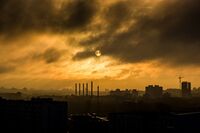
The population of the Sunset Sea Islands is mostly concentrated in major urban metropolises like Sunset City, Asimov or the currently under construction city of Tenma. Although the sum of citizens in smaller cities still outweighs the main urban population, a clear movement towards the cities is visible. Within the next decades, urban population will outweigh rural population 60:40 because of intranational migration and strong population growth in agglomerations. Rising life expectancy makes the median age of the population increase from year to year. This demographic change is expected to put a heavy tax load on the younger generations in the foreseeable future.
Although the majority of the Islander citizens claim ethnic Islander heritage, foreign minorities have started to grow since the end of the Thalassan War. Intercultural marriages become more and more common. Migration towards the SSI is still booming, as the economically strong nation attracts many people from weaker nations. The largest minority groups are from the UBPSSIF member states of Shurui (~Futanarien) and the Dobbarier Reef (~Dobby Is Free), followed by Synturians and Andallans. Most migration happens because of education and work the SSI offers to UBPSSIF citizens. The Synturian minority is growing fastest, since the Syndicate State and the Radiant Republic have aligned politically more and more over the course of the past few months. Further minority groups worth mentioning have their roots in Orioni, Prymont, Fleur de Lys, Iverica, Variota, Sefesia, Gallambria and Girkmand. Descendants of international diplomats migrating to the SSI during the early age of the Kingdom still often hold high political positions, for example former Prime Minister Dr. Lydia Mauve and current Prime Minister Theresa Tumbleweed.
In recent years, the tropical archipelago nation became a popular destination for retired people from all over the world to migrate to. The warm beaches and beautiful landscape offer a perfect backdrop for the final chapters of life. Unlike many other cultures, sexual diversity has never been anything extraordinary, even in the past. Homosexual or polygamous relationships were common already during the eras of warlords and imperialism. If two warriors on a battlefield were in love with each other, they were considered more valuable in war, as they would fight harder to protect each other. LGBTQA+ members are an accepted part of society, so much so that virtually nobody minds them. The constitution of the Sunset Sea Islands protects sexual and religious freedom and punishes discrimination.
Education
Education is one of the primary focusses of the government of the Sunset Sea Islands. From pre school to university, education is absolutely free for everyone, including foreign students. A high level of education is viewed as essential to modern life by the population of the nation. In combination with several progressive policies promoting learning and participation in educational activities, the free education has led to a high standard of intelligence and education throughout the nation. The Sunset Sea Islands feature numerous prestigious universities and scientific institutions, including the Asimov Academy of Applied Sciences, the Bastion Institute of Climate Surveillance and the SSI Space Exploration Centre.
Because of the high percentage of students choosing university over a manual education after secondary school, the nation currently experiences a lack of blue-collar workers. Over the last few years, however, immigrants from the UBPSSIF member states have started to establish good lives in the SSI by pursuing manual labour, a field in which incomes rise proportionally to the lack of craftspeople. Many also work in construction, for example at the construction sites of Tenma and the Manamana Canal.
Language
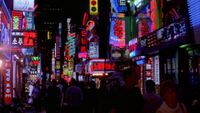
The Islander language exhibits similarities to the languages of several Oriental Europan countries, most notably Orioni, Koku and Ide Jima. The languages are not mutually intelligible. Furthermore, Islanders uses two different scripts for different applications. The primary alphabet is a complex, native pictograph scripture, unintelligible for foreigners without years of training. The second uses an Arhomanic alphabet. It is mostly used for user interfaces, newscasts, or advertisements and by foreigners who want to learn the language without having to learn how to write. However, a plethora of special characters and accents are necessary to visualise proper pronunciation of Islandian words.
Furthermore, the vast majority of Islanders are fluent in Common, as every child is required to learn the language of globalisation in school. Also, a lot of media produced in Common is consumed by the population, resulting in a good knowledge of contemporary speech. Sometimes, however, the contemporary Common presented in the media may already be outdated by the time the source gets released in the Sunset Sea Islands.
Religion
Freedom of religion is a right protected by the Islander constitution. The country is one of the most secular in the world, with a ratio of atheism or a-religiousness between ninety and 95%. Most members of major religions are either immigrants and their descendants or rare converts. Some, however, believe in “some sort of higher being” and meditation at sites such as modern “temples of tranquillity” can be observed. Such temples are usually empty rooms with strong sound insulation where one can be alone with their thoughts. Temples designed similarly to foreign cultures, for example Koku and Ide Jima exist as well.
Culture
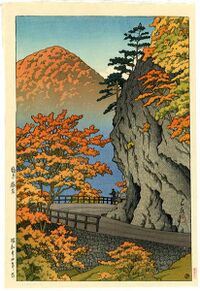
Even though the last decades of Matroilan or Mat Troi Lan and its aggressive nature overshadowed much of the culture of the Sunset Sea Islands up until the Thalassan War, some values are a traditional aspect of Islander culture. One such value is closeness to nature. The beauty of nature left a strong impression on artists in the past. This can best be seen in historical xylographs and drawings. Furthermore, tranquillity and solitude are often the theme of poems, songs or other forms of art from the earlier history of the nation.
Today, culture in the Sunset Sea Islands has more or less aligned with the rest of the modern world. The internet is spreading ideas and trends throughout the world. Especially the youth and the generations of their parents do not perceive patriotic or even nationalistic tendencies, as globalisation takes its course. However, some products of Islander culture are popular overseas, for example computer and video games, as well as both animated and life action films.
Architecture
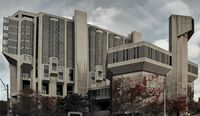
Whilst traditional Islander houses and modern one-family houses are a common sight in the countryside, the metropolitan areas of the nation are dominated by skyscrapers. The high population density and extremely limited building space as a result of heavy environmental protection. This leaves only one option for cities in the Sunset Sea Islands to expand: upwards. The metropolises are architectural masterworks of concrete and glass, housing tens of millions of people.
Since the invention of Elegy Superconcrete, a new, durable and quicker drying form of concrete, an architectural revolution has begun. The epicentre is Tenma, a new city whose construction was ordered in early 2018. Construction speeds for new buildings were dramatically cut, and so a city of fair faced concrete grows on Solitude Island. The high temperatures on the equatorial island increase the drying speed of the material additionally.
However, concrete has been a popular building material throughout the Sunset Sea Islands since the end of the Thalassan War. The most notable architectural style is SSI Brutalism, classified by giant, monumental concrete buildings.
References
- ↑ Sunset Sea Island royals receive refuge in Orioni (17 December 2017)
- ↑ This is an automatic emergency broadcast (19 April 2021)
- ↑ Rettenmyr Stock Exchange suffers worst downfall in history after the Ishijima takeover of the Sunset Sea Islands (24 April 2021)
- ↑ Foreign travel advice for Sunset Sea Islands (25 April 2021)
- ↑ Gallambria sanctions Sunset Sea Island Interim Government, announces withdrawal of Diplomatic missions (20 April 2021)
- ↑ Europan Royal Family Tree (10 November 2018)
- ↑ Foreign Relations of the Sunset Sea Islands


